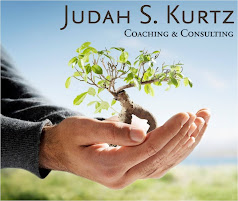There is an approach from design thinking that focuses on questioning the question – taking a look at all sides, and even pondering whether we are asking the right question to begin with. By staying with the question, we open up space for innovation, reflection, and even for the answers to reveal themselves serendipitously (Einstein, among many others, have done this).
I was talking with a friend today about some significant life events and issues that we have in common. I tend to be rational and logical up-front, and have to allow some time to allow the emotions to process themselves out; in contrast, she tends to have a much more emotional response up-front, and must allow her mind to process and discover the connections over time.
As uncomfortable as it can be at times, we both know from experience that there is value in sitting in ambiguity for some time to allow for the whole picture (both internal and external) to reveal itself. If we rush too quickly to a resolution, we will most definitely have to revisit the issues over and over until we identify and deal with the many facets (mental, emotional, relational, practical, tactical, etc.) we probably glossed over.
This concept reminds me of one of my favorite scenes from Postcards from the Edge, the movie based on the Carrie Fisher novel about her and her mother, Debbie Reynolds. The scene involves Gene Hackman (playing a film director, Lowell) and Meryl Streep (playing Suzanne, an actress dealing with some tough life questions).
Lowell: Growing up isn't like in a movie where you have a realization and life changes. In life, you have a realization and your life changes a month or so later.
Suzanne: [sarcastically] So I just have to wait a month?
Lowell: It depends on the realization. Some of them you only wait a couple weeks.
Stay with the question. Don’t rush straight to easy and quick answers, as you are doing yourself a disservice. While we all want solutions and resolution right NOW, it is the question that holds much of the power. The process can be just as, if not more important than the result (a related blog entry HERE).
Offer it up to the universe; open your eyes, heart, and mind; and pay attention. Pray, journal, talk to friends, give yourself permission to be okay with the confusion and ambiguity, and most importantly, be kind to yourself. All the components of the multi-dimensional answer will reveal themselves when you allow space for them to show up.






